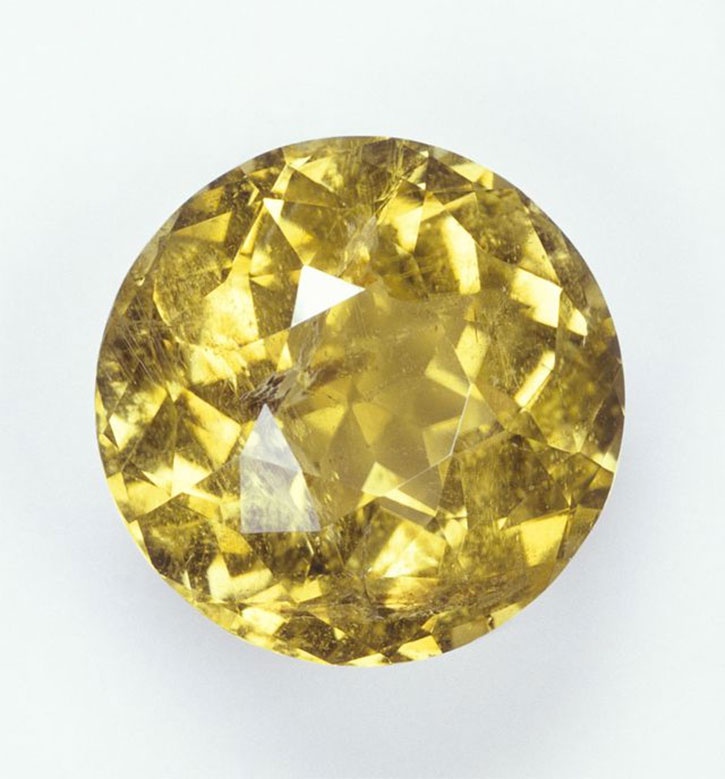Tourmaline’s Colors and Properties
Tourmaline is a favorite gemstone that’s available in almost every color imaginable, including stones made up of multiple hues. Tourmaline is fairly hard, and although they differ somewhat, most versions of it are rated at about 7.5 on the Mohs Scale. This is relative to diamond, the hardest gemstone, which is rated at 10, and turquoise, a softer gemstone rated from 5-6.

History
Until the 1700s, red tourmaline gemstones were often believed to be rubies, and green versions were sometimes tagged as emeralds.
This was until a discovery that made it apparent that the gems are unique. Heating tourmaline (or even rubbing the stone) creates an electrical charge that makes it act a little like a magnet, although the gem attracts and repels lightweight particles, not metals. For this reason, this stone is often used in crystal healing practices.
Birthstone
Opal is generally considered the October birthstone, but tourmaline is an alternate gem for the month.
Treatments
Like many other gemstones, tourmaline is often treated to change its color, and the process can make the gem less durable.
Value
Tourmaline varies greatly in price. Most versions of the gem that you’ll find online or in your local jewelry store will be quite affordable, but rare tourmaline can be just as expensive as a fine diamond.
Keep reading to learn more about different tourmaline varieties and how these are used by alternative healers.
How Tourmaline is Used for Metaphysical Purposes

Many types of tourmaline are used by alternative healers or others who feel the gems have metaphysical properties.
- Pink tourmaline, red tourmaline, and watermelon tourmaline are all most often associated with love, emotions, and issues of the spiritual heart.
- Green tourmaline is thought to improve the physical well being of its wearer.
- Golden colors of tourmaline are often associated with work that’s needed to strengthen the third chakra, also recognized as the solar plexus chakra, which is related to the color yellow. It’s felt that wearing golden shades of the stone can help us find inner strength.
- It’s believed that black tourmaline grounds us and can help protect us from negative energy.
- Blue tourmaline is often used to enhance meditation and psychic intuition.
Pink Tourmaline

Pink tourmaline was discovered in California in the late 1800s and is a popular version of the gem. Colors range from light pink to red — you may see commercial versions of red tourmaline that are called Rubellite.
Green Tourmaline

Green tourmaline occurs in many shades, too, from pastel stones to the deeper greens that were mistaken for emeralds. These dupes are the most expensive of today’s green tourmaline, which usually contains chromium. Some greenish tourmaline gems have undertones of browns and yellows, and light versions of the gem are often heated to intensify their color.
Yellow and Orange Tourmaline

Yellow and orange tourmaline are found in nature, but some of the tourmaline jewelry marketed with those colors contain stones that have been treated. The treatment can fade over time or if the gems are exposed to heat.
Multicolor Tourmaline

Multicolor tourmaline is less common than solid color varieties. Some stones have two colors, often either a mix of pink and green or blue and green. But three or more colors are possible. The term watermelon tourmaline refers to a gem that truly resembles the fruit — a pink center with a green ‘rind’ surrounding it. Segments are sliced away from the stones to put the focus on its unique configuration.
Blue Tourmaline

Blue tourmaline can be found in a range of colors and is often tinged with green or other colors that dilute the blue. Paraiba tourmaline is a rare and expensive version of the gem that’s found in Brazil. It’s often a clear turquoise blue but has been found in other colors.
Colorless Tourmaline

Colorless tourmaline occurs in nature but can be created by heating pink varieties of the gemstone.
Cat’s Eye Tourmaline

Cat’s eye tourmaline has the typical band of “light” that moves across a polished stone, making it resemble the eye of a cat.

 Birthstones of the Zodiac | Zodiac Birthstones
Birthstones of the Zodiac | Zodiac Birthstones